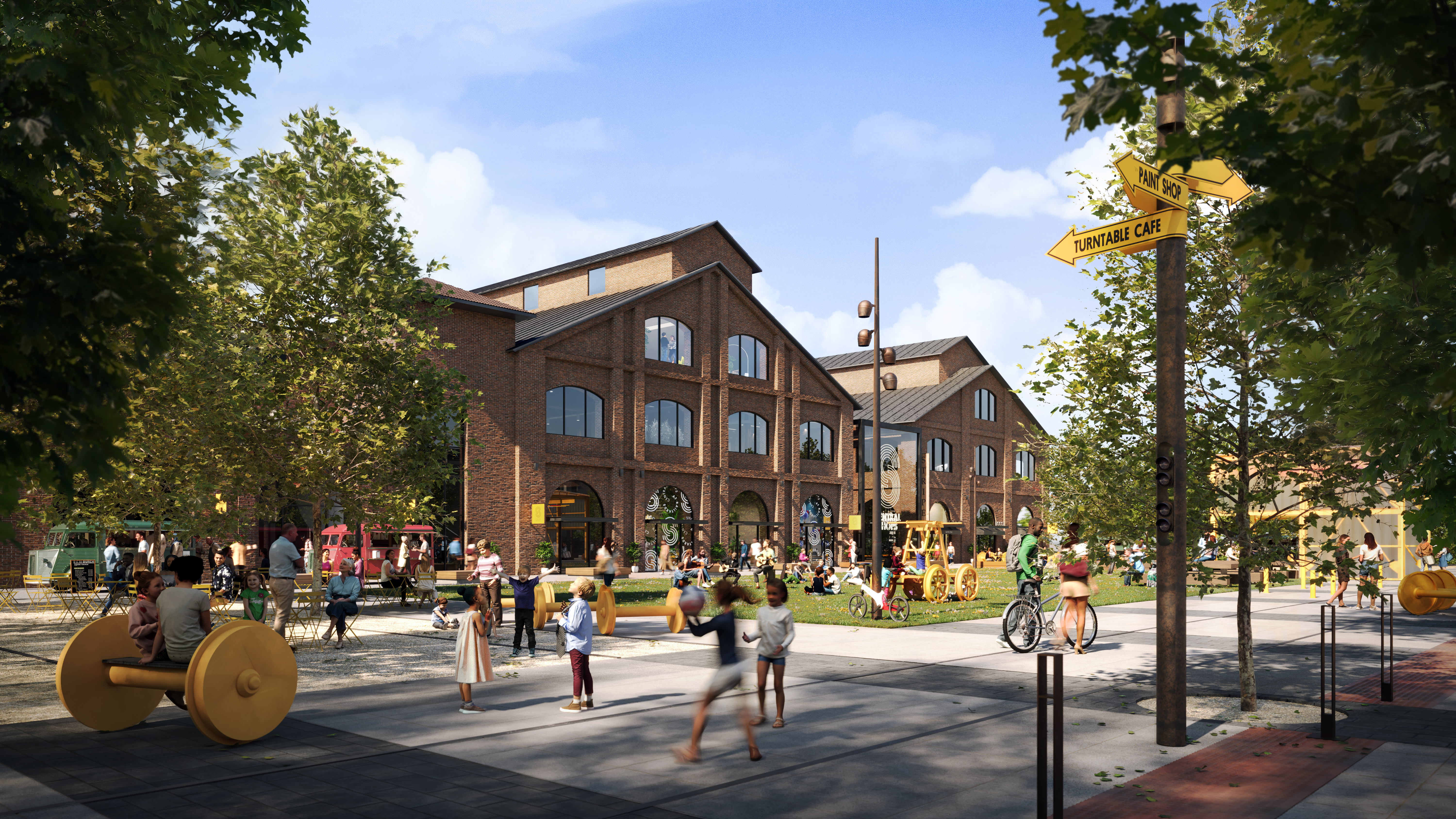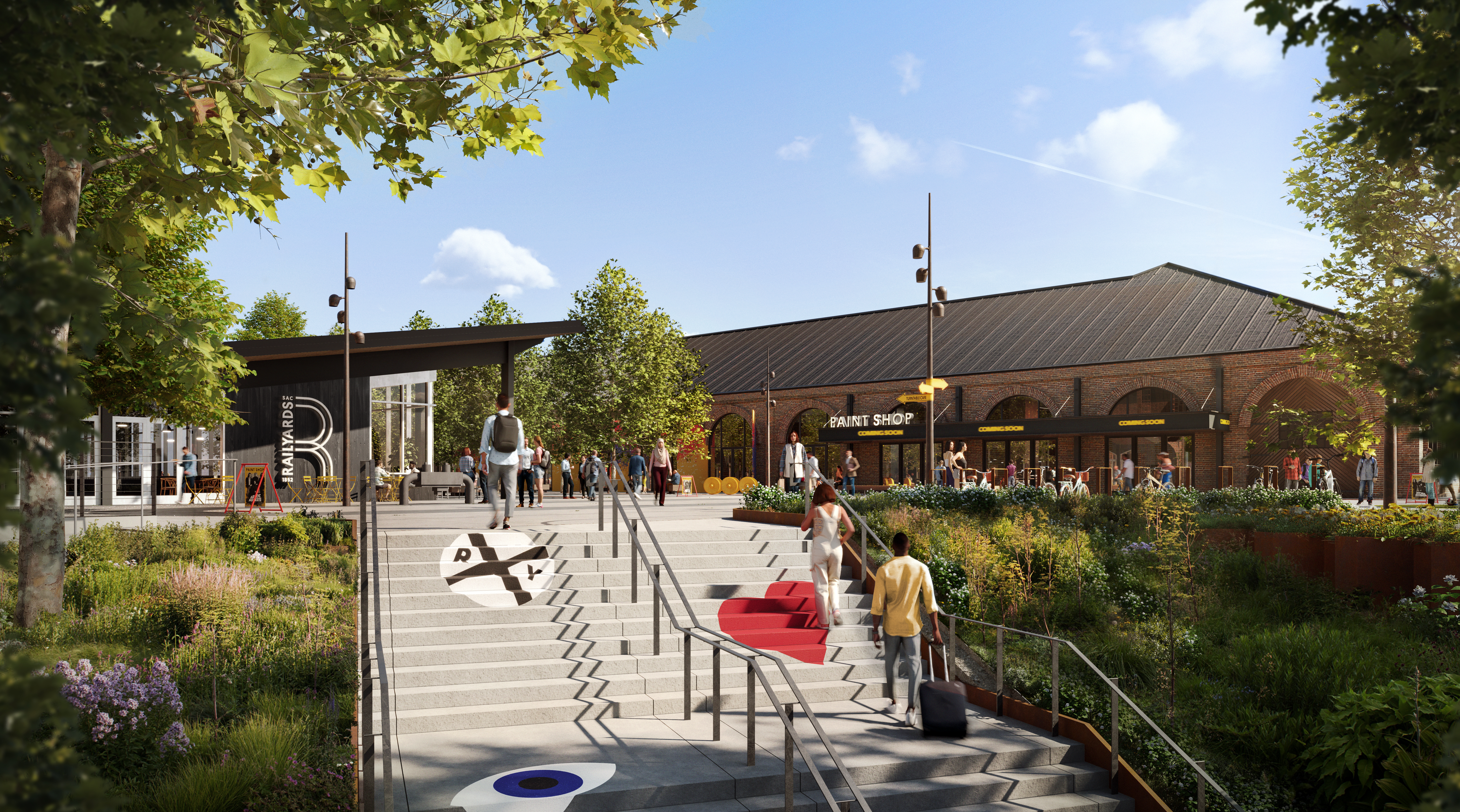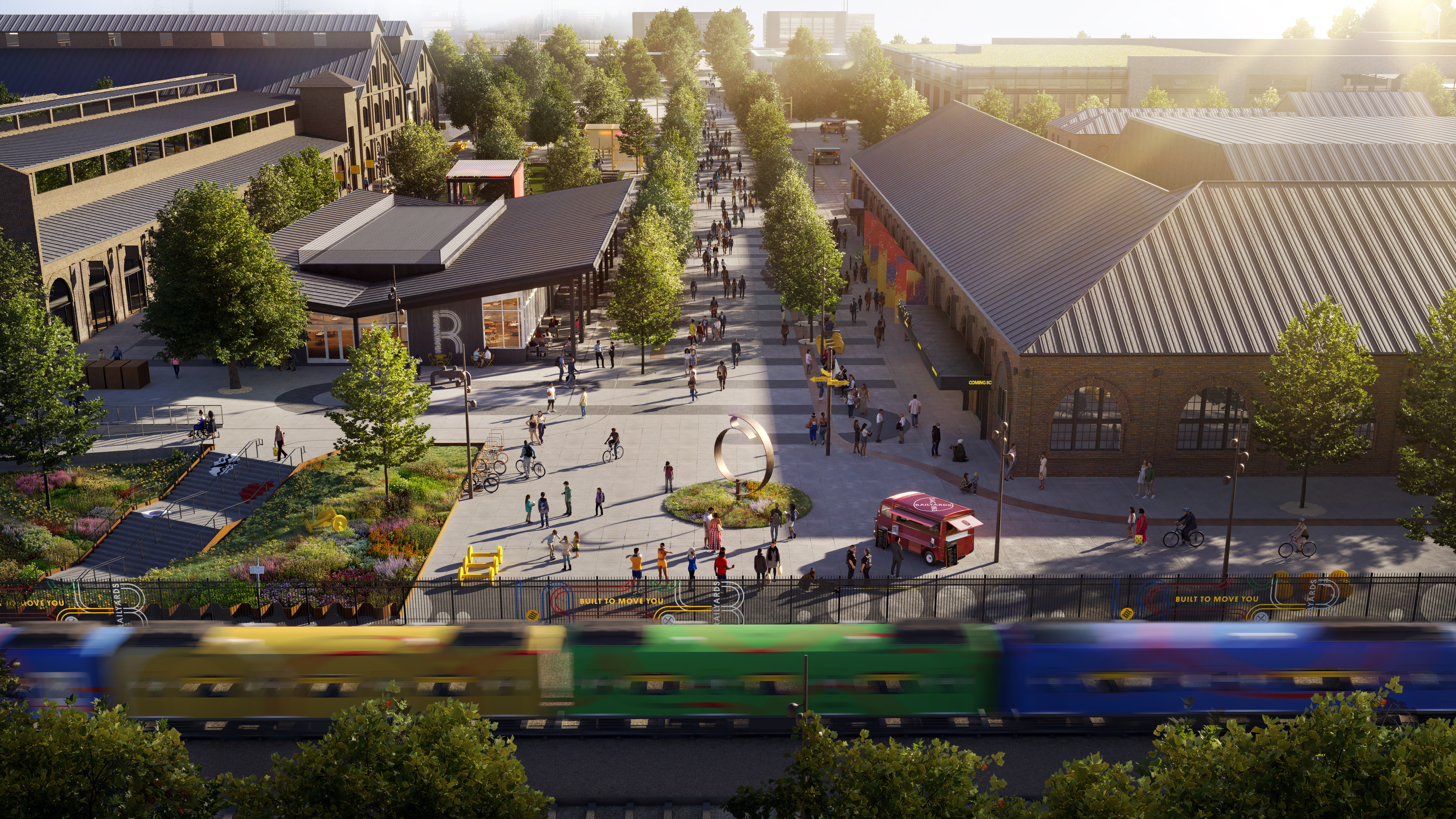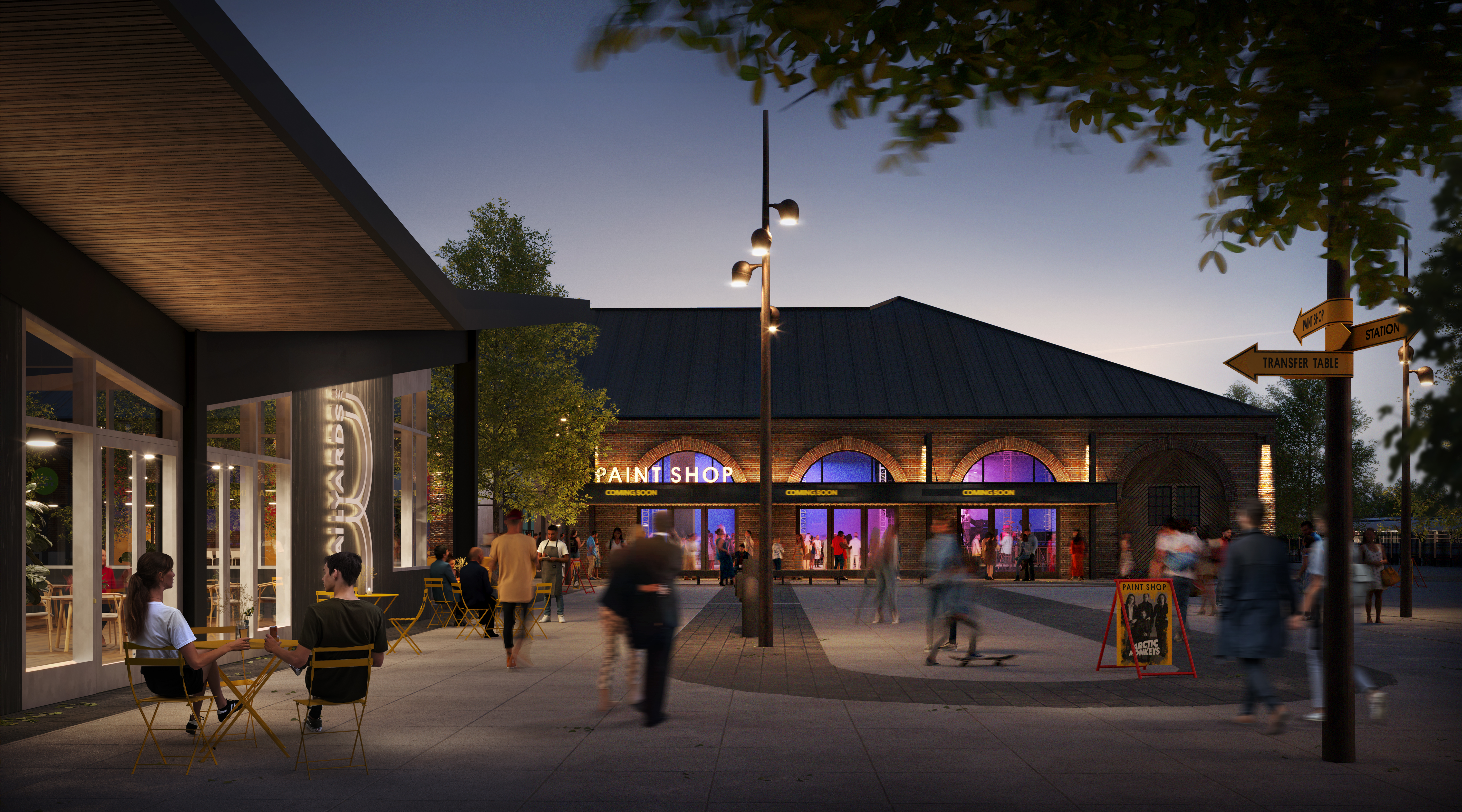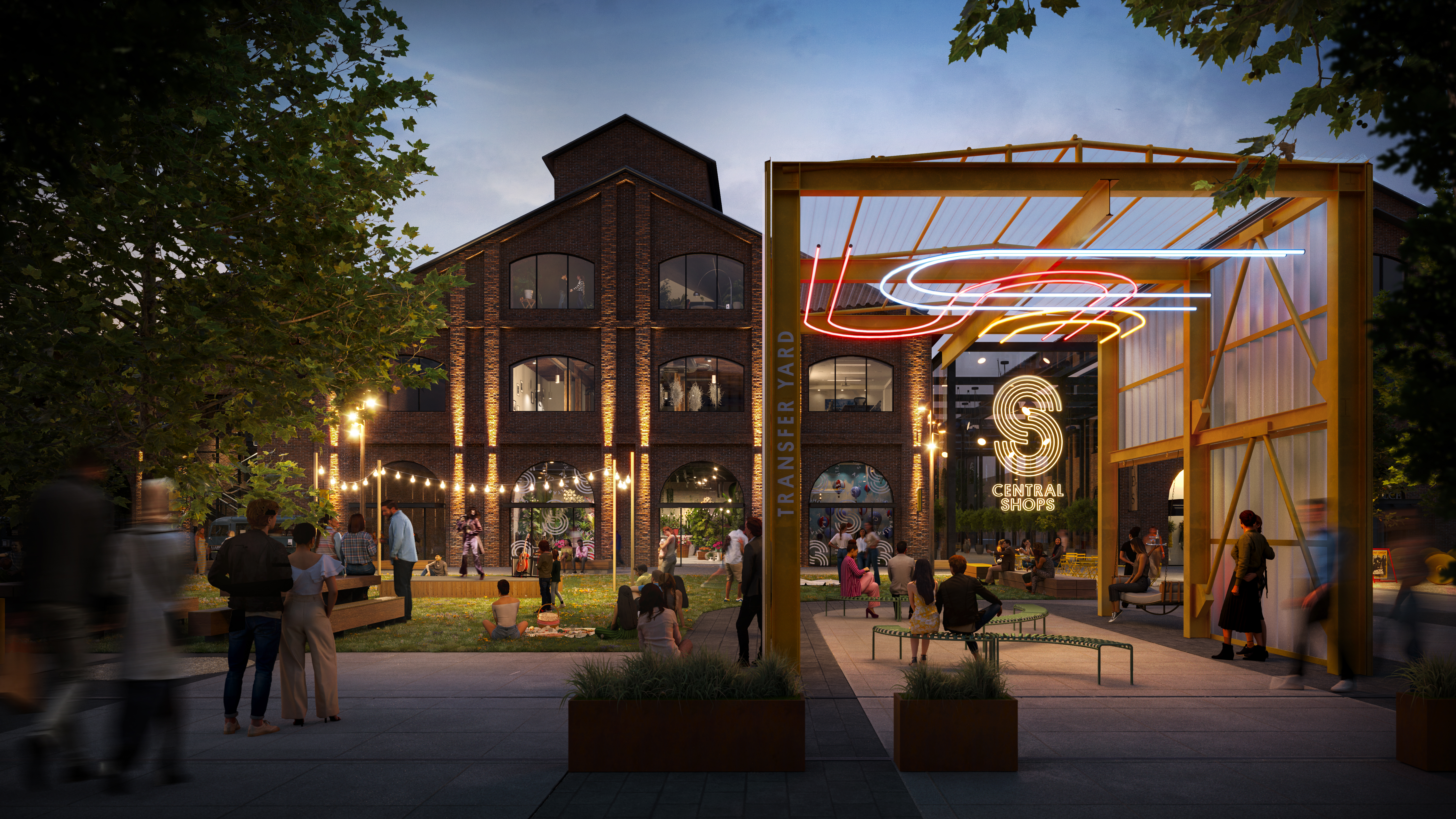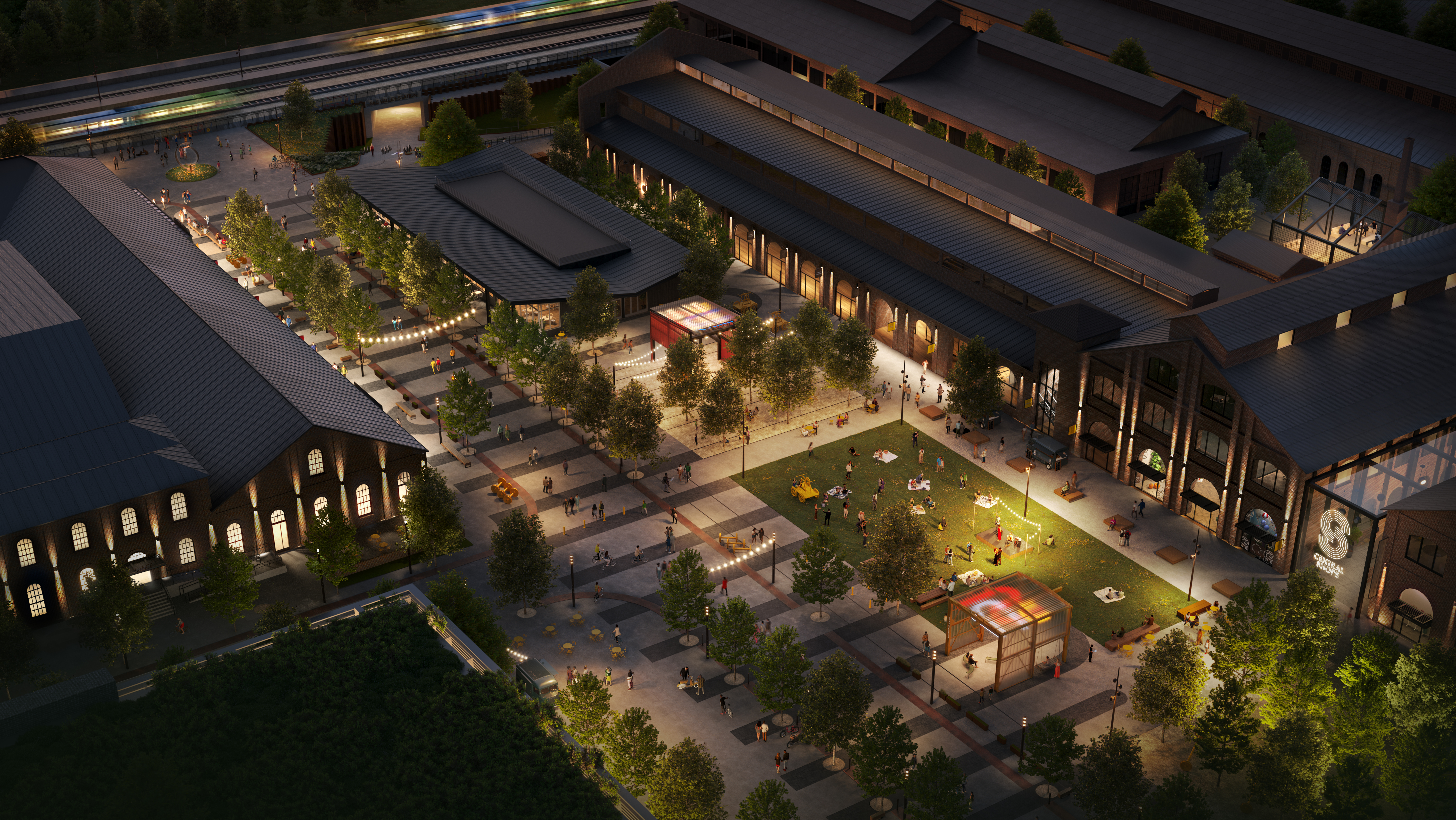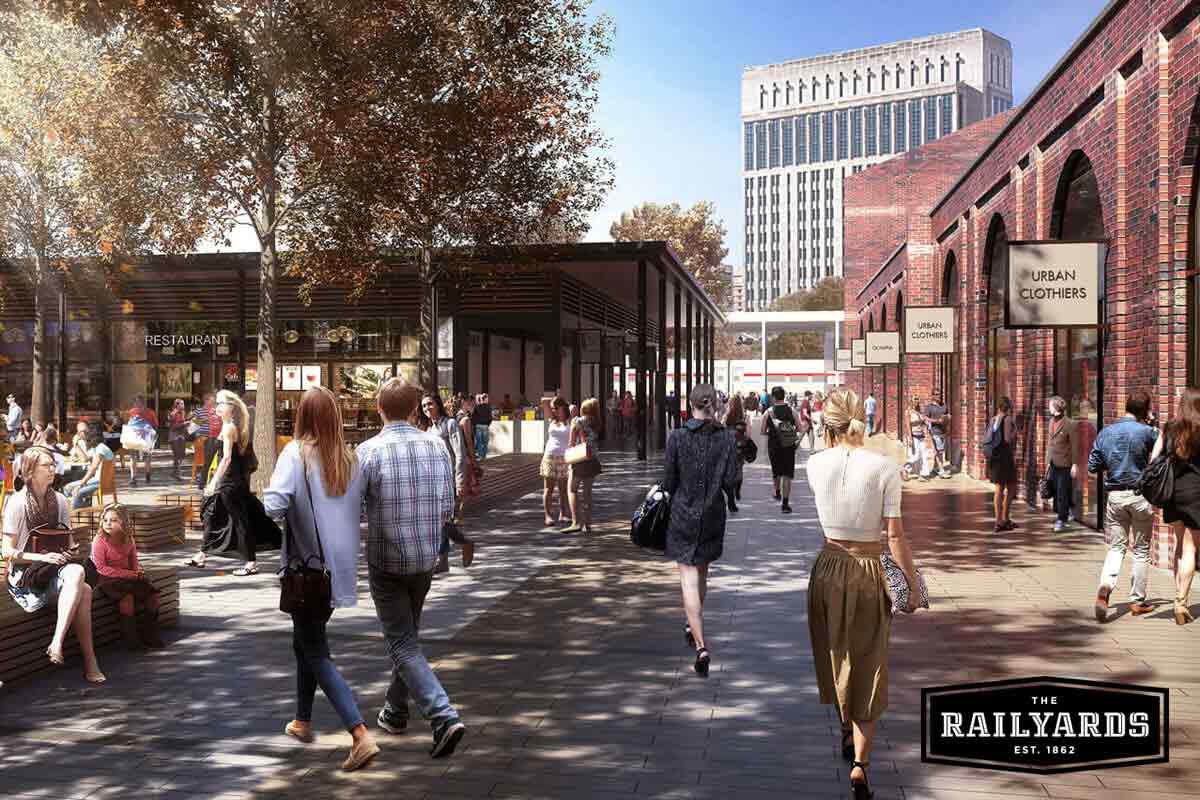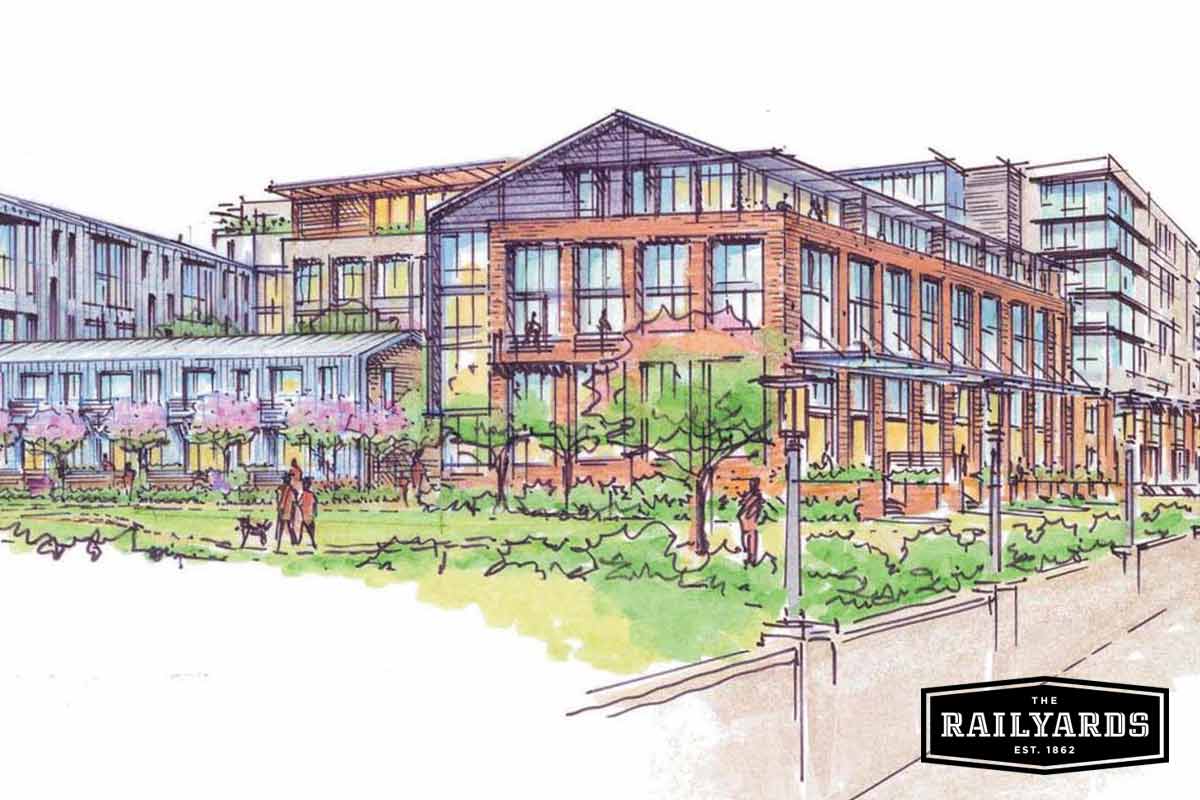
February 29, 2024 / Author: the Railyards
Discover how infill development projects are transforming urban communities and revitalizing neighborhoods throughout the U.S.
In the prosperous years following WWII, Americans began to make a shift out of cities and into suburban communities, drawn by the appeal of cheaper housing and sizable building lots. The “American Dream” began to take shape as a single-family home in the suburbs and an automobile to help the family get where they needed to go.
Unfortunately, developing suburban communities further away from transportation hubs and job centers caused unwanted effects. Urban sprawl, the rapid expansion of development over large expanses of land, creates more reliance on automobiles for transportation, which increases air pollution, destroys wildlife habitats, and contributes to racial and economic disparity.
To counter the negative impact of urban sprawl, developers and community leaders are turning to infill development as a way to create more housing opportunities in urban neighborhoods.
Take a tour through our guide to infill development and discover some exciting examples of infill projects that are reshaping urban communities throughout the U.S.
What is Infill Development?
- Occurs in already built-up areas with existing transportation and utility infrastructure.
- Often repurposes or replaces existing buildings, parking lots, or other impervious areas.
- Adds homes and/or businesses near the center of cities and towns.
Infill development is building on unused and underutilized land. Infill revitalizes communities by breathing new life into empty buildings, vacant lots, and unused parcels. It’s typically practiced in urban areas but is not limited to urban development.
Infill vs. Brownfield Development
Infill is the development or redevelopment of underutilized land in existing built areas. Infill development can take place on brownfield or greyfield properties.
Here is a quick primer on the different types of properties that are ideal for infill development:
Brownfield: abandoned, vacant, or unused sites that have been contaminated from previous uses. Brownfields are often sites previously used for transportation or utility purposes, such as former railyards, airports, and manufacturing facilities. Brownfield infill projects typically require remediation—a process of cleaning up and removing contaminants—before redevelopment can take place.
Greyfield: abandoned, vacant, or unused sites with vast areas of asphalt concrete, such as retail and commercial shopping centers, office buildings, or residential areas. Greyfields do not have the same level of environmental contamination as brownfield sites and typically do not require the same costly process of remediation.
Greenfield: land that has never been developed. Greenfield sites tend to be more rural, located on the fringes of cities or out in the countryside. Greenfield sites can include a variety of land uses, from residential to commercial to industrial. Greenfield development eats away at undeveloped green sites such as agricultural land or green open spaces.
Infill development is the process of redeveloping an underused or abandoned site, which could be a previously contaminated brownfield site or a less-contaminated greyfield site, in order to limit development on undeveloped greenfield sites and preserve agricultural land and green open spaces.
What are the Benefits of Infill Development?
Instead of directing development outward, infill helps utilize existing parcels, lots, and buildings. Successful infill development usually focuses on bringing a mix of residential, commercial, and entertainment opportunities to a community.
The benefits of infill include:
- Sustainable, eco-friendly development: conserves land and reduces development resources
- Combats suburban sprawl: reduces the need for automobiles for commuting and errands
- Closer proximity to public transit: reduces vehicle miles traveled and reduces emissions
- Redevelopment of vacant and unused lots: increases property values & restores economic vitality
- Preservation of historic sites: revitalizes and preserves historic sites for future enjoyment
What Does a Successful Infill Development Project Look Like?
Infill development projects are revitalizing urban communities all over the U.S. Here are a few examples of successful projects that have provided housing, jobs, and cultural and entertainment opportunities in urban communities.
Liberty Center, Liberty Township, Ohio
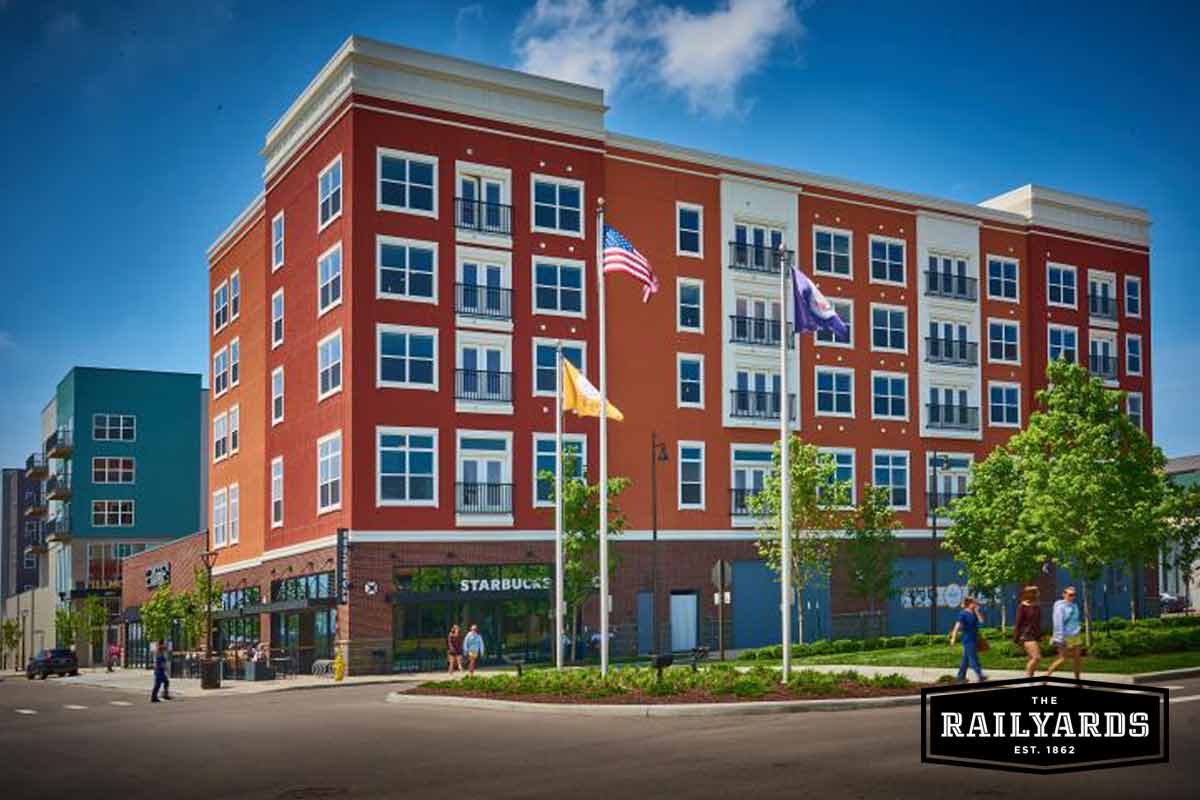
Liberty Center is a premier infill development project in Liberty Township, Ohio. With the recognition that dense, efficient development is the best antidote to suburban sprawl, Liberty Center’s developer, Yaromir Steiner, resolved to “build a place that offers more of a full life venue than these communities typically do,” says architect Robert Goodill.
Liberty Center brings together complementary urban functions: entertainment, shopping, office/ workspace, and apartments and townhomes. There’s an entertainment square anchored by a hotel, a 16-screen cinema, shopping, dining, and a comedy club. Close to the apartments and townhouses is a landscaped park with gathering spaces. Atop several adjoining buildings is an expansive rooftop acropolis with a contemplative maze garden and a nondenominational chapel.
Celadon at 9th and Broadway, San Diego, California
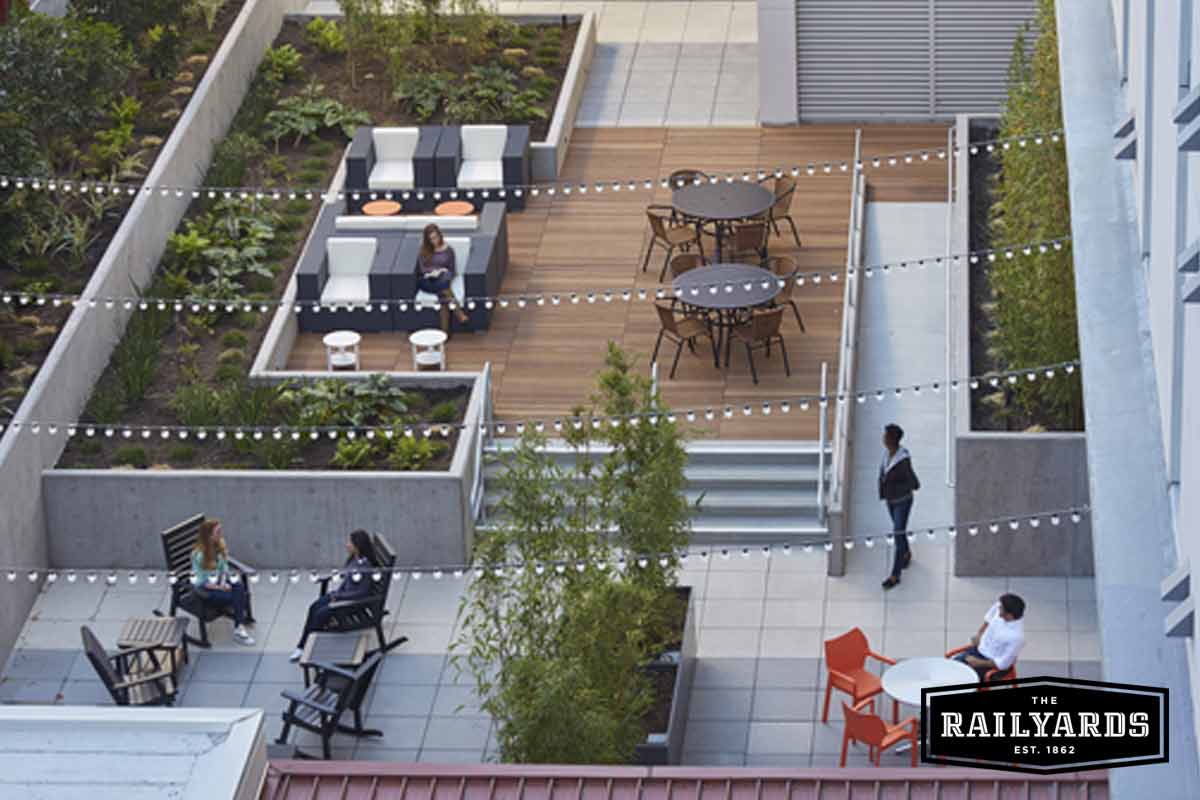
This mixed-use project addresses an unusually complex program. Located in a redeveloping urban area, Celadon at 9th and Broadway combines commercial uses at street level with 250 affordable rental units above, including 63 apartments for elderly tenants and 25 for young adults formerly in foster care.
Design architect Eric Naslund says that the team worked around the realities of having to design for two different groups of people, both of whom needed special services.“It’s like having two neighborhoods in one building,” says Ernesto Vasquez, architect of record. In addition, stakeholders had to solve the technical problems of building on a tight urban infill site (half an acre).
Celadon at 9th & Broadway is three blocks from a major trolley stop and near all basic amenities – grocery stores, a library, a post office, a park, and more. Residents of the building have access to three major common areas, all of which are integrated with the outdoors to take advantage of the San Diego climate. A terrace common space that offers downtown and ocean views to all residents.
Chatham Square, Alexandria, Virginia
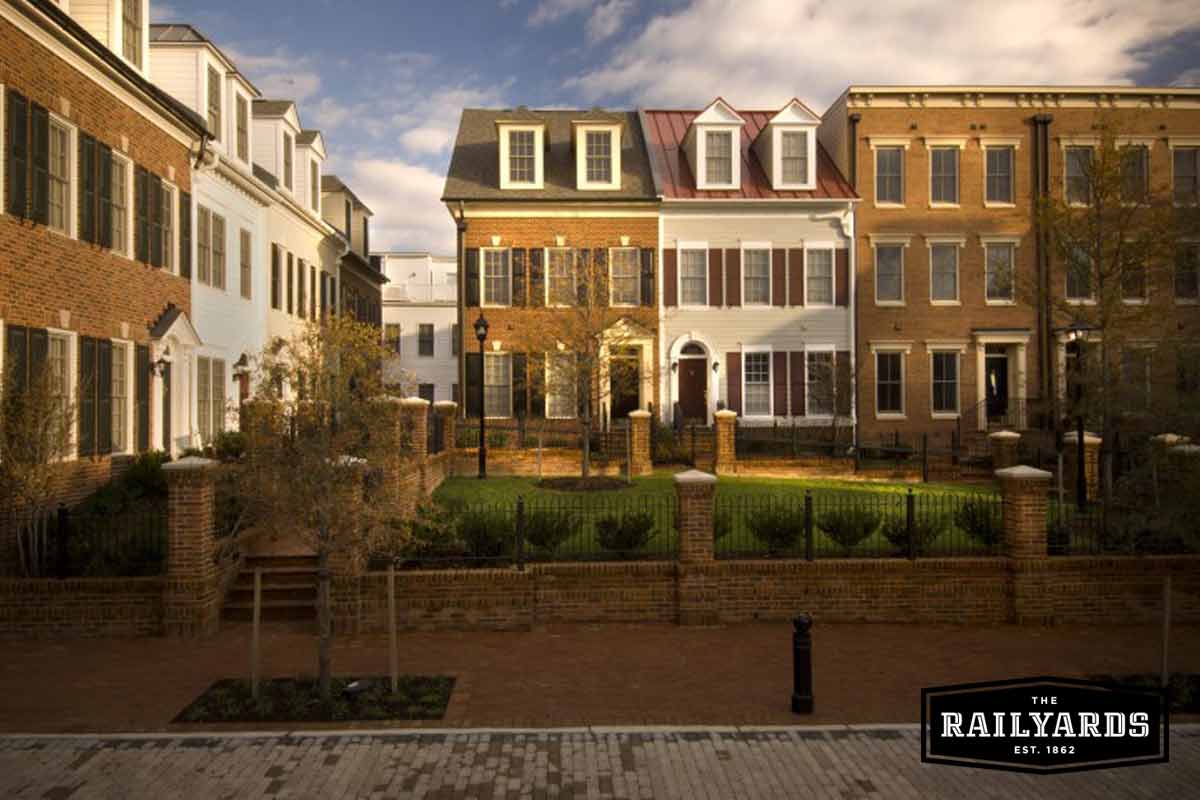
Chatham Square is an urban infill redevelopment project located near the historic district of Old Town Alexandria, Virginia, across the Potomac River from Washington, D.C.
This U.S. Department of Housing and Urban Development (HUD) HOPE VI project replaced 100 distressed WWII-era public housing units on two city blocks with a higher-density, mixed-income community of 100 market-rate, for-sale luxury townhomes and 52 public housing rental units that were designed to be indistinguishable from the townhouse component. Affordable and luxury dwellings share walls and are indiscernible from each other at street level. Chatham Square is mere steps away from retail, restaurants, public transit, and the city’s celebrated promenade along the Potomac River.
In keeping with a Hope VI funding requirement, job training was offered to incumbent residents, many of whom took on entry-level construction jobs and helped rebuild their own community. Upon the project’s completion, former tenants of the crumbling 1940s-era housing were given first dibs on the new rental units. Many of the housing project’s original residents now live at Chatham Square, and several are now employed full-time by builder EYA or its subcontractors.
Find more examples of incredible infill projects revitalizing cities and towns across America.
Infill Development: Changing the Way We Live, Work, and Play in Urban Communities
Infill development is often seen as an opportunity to address sprawl and its associated problems while revitalizing and growing existing communities at the same time. It reduces the environmental impact of development, promotes resources and land conservation, and strengthens local economies. Infill has the ability to revitalize communities, meet housing demands, attract employers, and encourage walkability and use of public transportation. It’s changing the face of urban communities for the better.
Follow The Railyards for more information about the nation’s largest infill development project that’s transforming a former railyards site into a thriving mixed-use community doubling the size of Downtown Sacramento.
This blog post was originally published in 2021 and was updated in 2024.

